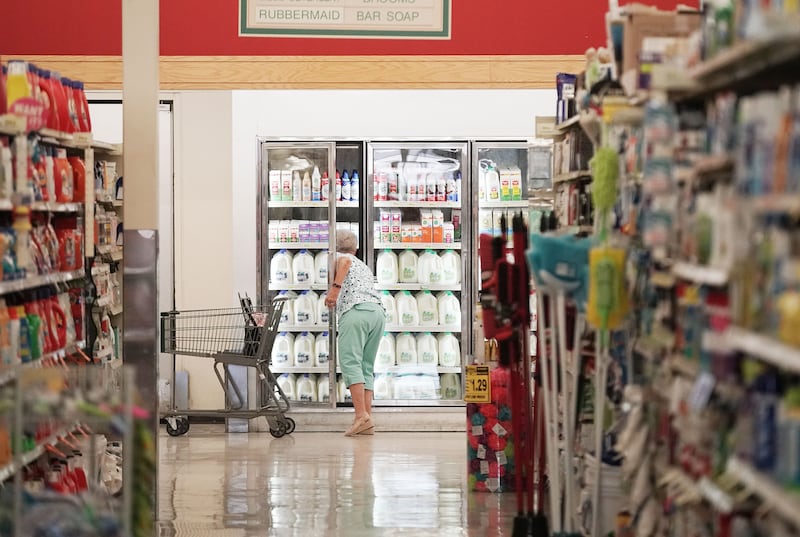Travel back with me, if you dare, to the year 1979. It’s springtime. Graduations loom, and Scholastic Magazine has just conducted a survey of the nation’s teenagers, asking them what they fear most about the future.
Maybe you were one of them.
Given a list of possible responses and told they could pick three, the teens overwhelmingly chose inflation and crime as the top two, ranking energy issues a distant third.
Maybe they were reacting to things they had heard their parents and neighbors complain about. Maybe, as one of them told Scholastic, it was more personal. “Rising prices concern me. … Crime, too, scares me,” 18-year-old Renee Church, from Iowa, said.
Either way, the kids were onto something. Inflation and crime may be close cousins, and the late ’70s may be looming on the horizon again — this time, we can hope, without leisure suits, bell bottoms or shag haircuts.
Many of the current generation haven’t had to deal much with inflation, other than a small, barely noticeable and manageable increase every year. But now it has reached a steady annual rate of more than 5% for several months, led by increases for food, shelter, cars and energy.
When the economy tanked during the great recession of 2008-10, crime rates remained low. Now, they are rising. Some experts say this is because we’ve been focusing on the wrong thing.
Inflation, not unemployment or falling wages, is the real catalyst for crime.
We didn’t have it then; we do now.
That is the theory of University of Missouri-St. Louis professor emeritus Richard Rosenfeld. In an opinion piece published this week, American Enterprise Institute senior fellow Brent Orrell writes about Rosenfeld’s research, including new evidence that links inflation to the murder rate, especially in low-income communities.
The FBI’s newly released crime data for 2020 showed an almost 30% increase in the nation’s murder rate. Property crime figures did not mirror that trend, but it’s too early to dismiss any eventual connection.
Some recent news reports seem to point toward property crime troubles. Earlier this year, when lumber prices rose dramatically, reports began surfacing of lumber heists at construction sites and lumber yards. Bloomberg quoted a supply chain expert who said the prices gave rise to a lucrative underground market. Rising prices are “going to drive criminal activity just like all other forms of supply and demand,” he said.
Similar reports have surfaced of the thefts of bicycles, catalytic converters and autos, among other things.
When prices remain steady or go down, such opportunities don’t present themselves.
This confirms a study published by Global Crime in 2007, that found, “inflation lowers the real income of low-skilled labor, but rewards property criminals due to the rising demand and subsequent high profits in the illegal market.”
You may be wondering what all the fuss is about. Hasn’t the Federal Reserve said this inflation is only temporary? Yes, but Market Watch quoted Atlanta Federal Reserve President Raphael Bostic this month saying it also won’t be brief.
The problem is that ordinary Americans, who can’t help but notice extraordinary prices for a lot of things, are beginning to adopt an inflationary mindset. Once that happens, businesses start to bake inflationary expectations into next year’s budget. Already, many retailers are having to offer considerably higher wages to attract workers. That will lead to higher prices for consumers, which eventually will lead to demands for even higher salaries from workers trying to keep up.
Which brings us to another phrase we haven’t heard much since the ’70s — the wage-price spiral.
Do we already have this mindset? A Deseret News/Hinckley Institute of Politics poll earlier this year found 85% of Utahns either very or somewhat concerned about inflation, with 60% of them believing it would be a “lasting” concern, not temporary.
As Orrell wrote for the American Enterprise Institute, all of this ought to make members of Congress think carefully about passing “another trillion-plus-dollar round of fiscal stimulus.” Unleashing inflation “can have far-reaching effects on the security of people and property, and beyond that to our broader feelings of order and social stability.”
It’s also just plain discouraging on a day-to-day basis.
As Wall Street Journal editorial writer Joseph C. Sternberg recently wrote, temporary inflation is a myth. “What ordinary people know and economists too often forget is that while inflationary spikes may come and go, higher prices are forever.”
Which brings me back to 1979. The inflation rate that year was 11.35%. By the end of the year, every $1 someone had in 1978 was worth only 90 cents. Today, that same ’78 dollar is worth only a quarter.
Even after many years of minimal inflation, no one should be foolish enough to think that change is temporary.
Jay Evensen is the Deseret News’ senior editorial columnist.


 alt=Jay Evensen
alt=Jay Evensen